How to Cook your Catch: The Mighty Deep Fried Mullet
Eugene L. 08.09.22

While considered to be bait in most places, in the Panhandle region of Florida mullet is considered great eating. While not as popular as other gulf coast fish like snapper and grouper, it is a very economical fish to eat and easy to acquire. Mullet can be caught almost everywhere, off the beach, in the bays, and even in the back of creeks and rivers. They are an euryhaline species capable of surviving in salt, fresh, and brackish conditions, but even with being everywhere, you can’t catch them on rod and reel. They feed on algae on the bottom by sucking in sand and mud so you need a cast net to catch these guys.
Their diet also gives them a very unique anatomical feature as well, like chickens the mullet has a gizzard. This tough muscular organ is used to grind up what they eat before it reaches their stomach. While many people don’t eat them, they are quite tasty. If you enjoy chicken gizzards you’ll enjoy a mullet gizzard. Today from the mullet we will be eating the fillets, gizzard, and bones. In the later fall and winter months you can catch roe mullet as well and fry up or cure the roe.
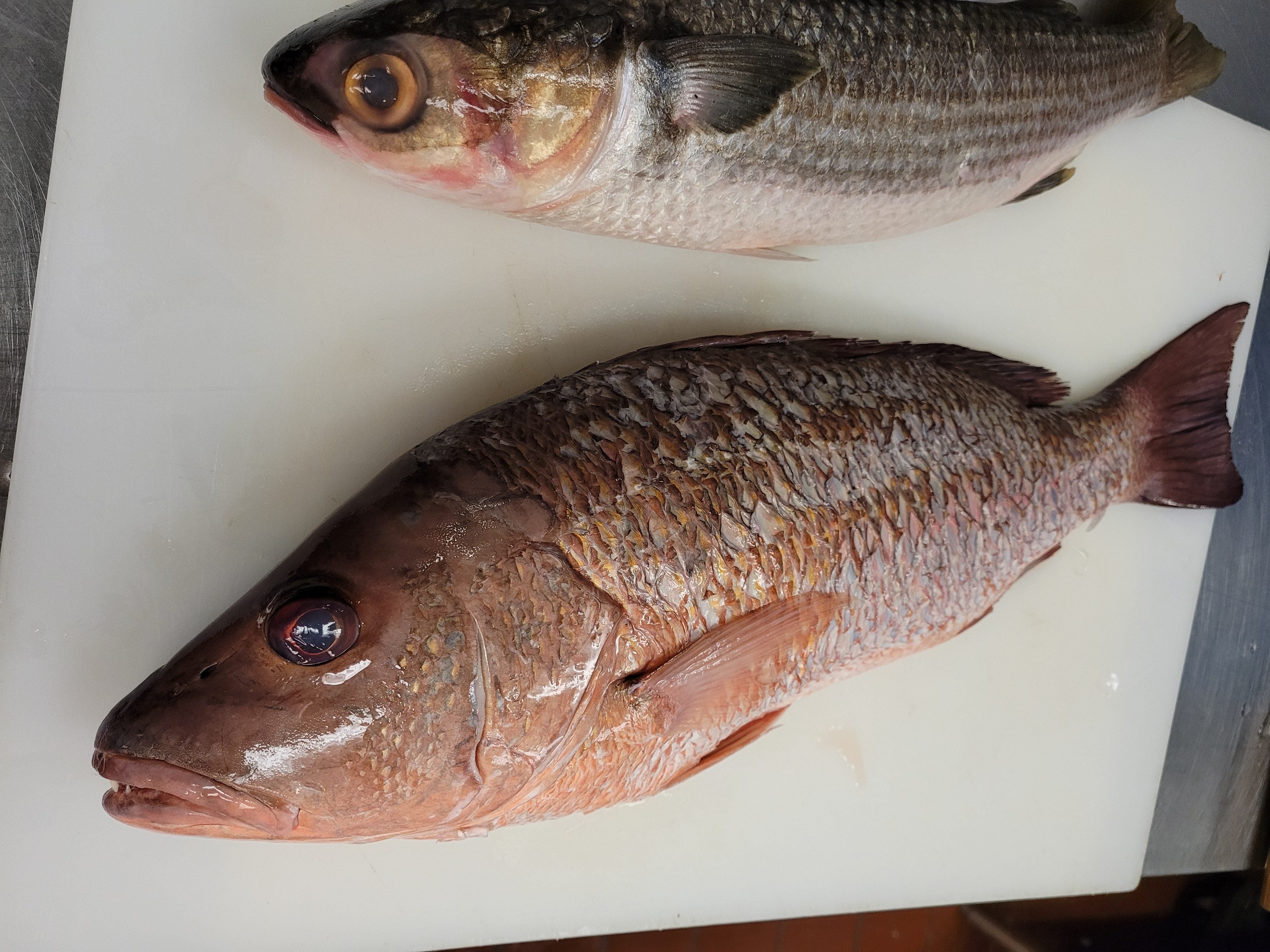
We start off with the whole mullet, guts still in. Just like any other fish gut them out and take the heads off. When you gut them, the gizzard is located right behind the throat. It is a large round organ connected to the GI tract. Remove it from the rest of the guts and set it aside. You can then just toss the head and guts away.
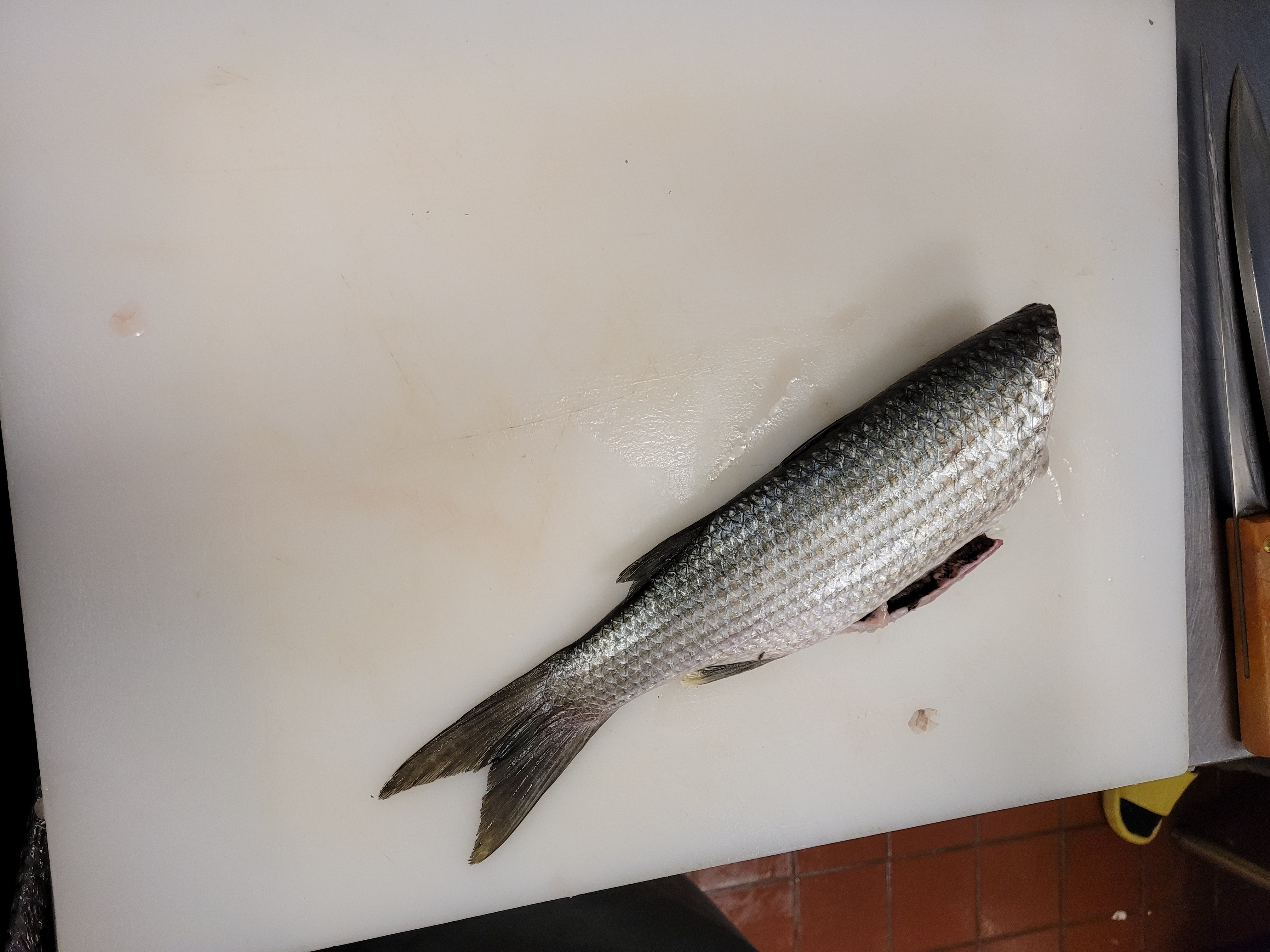
Now the fish has been cleaned it’s time to fillet the mullet. Pretty straightforward stuff, fillet both sides and keep the frame to the side. Keep the fins on the frame as they crisp up when fried and are some of the best parts.
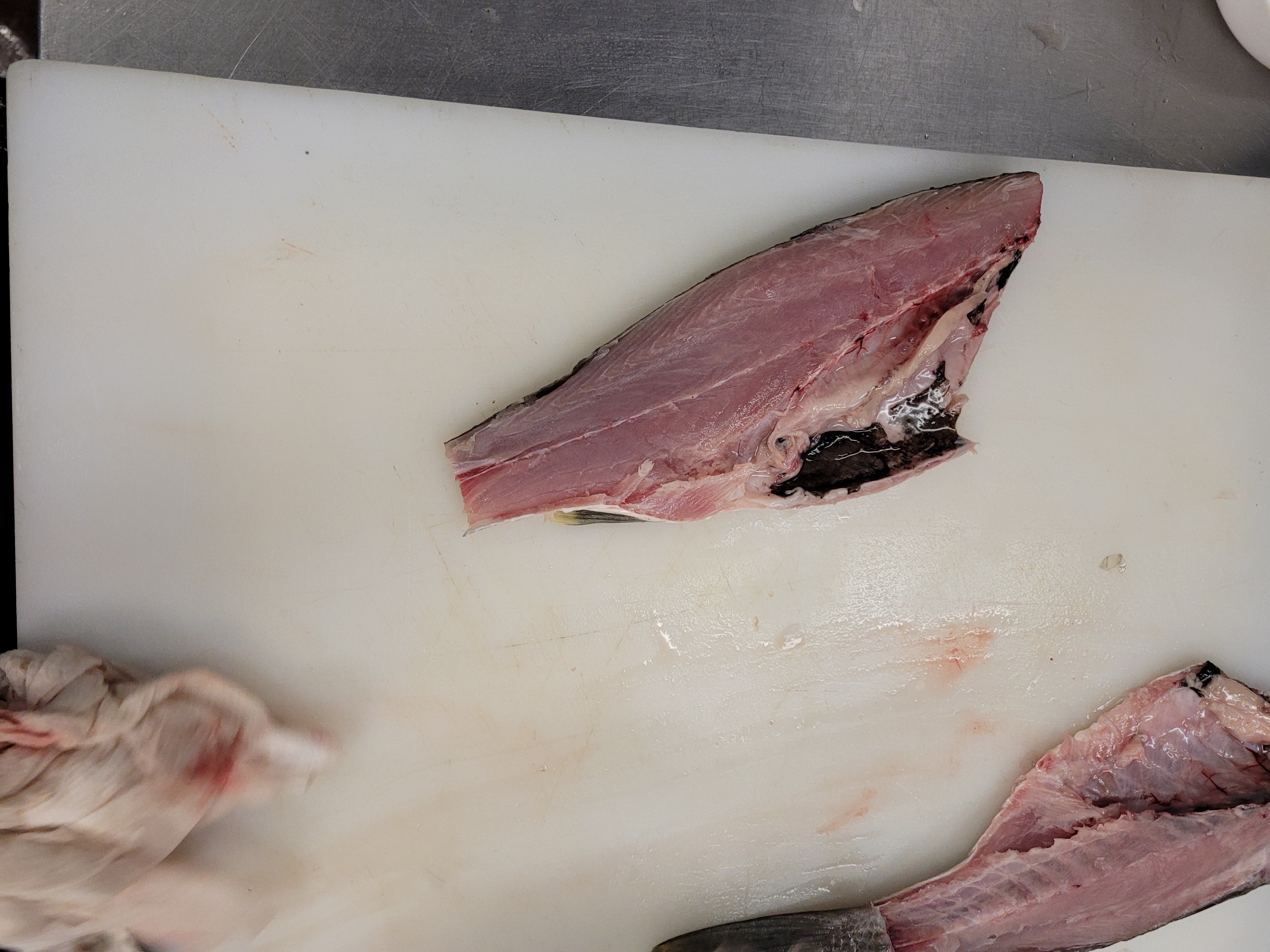
Once you have the fillets cut out to the ribcage, don’t be shocked by the black stomach its normal. You can just cut out the stomach area or to get as much meat as possible cut out the ribs and save the stomach meat. Then just skin the fillets. Though some people like the skin on the fillets, if that’s the case for you just scale the mullet before you fillet them.
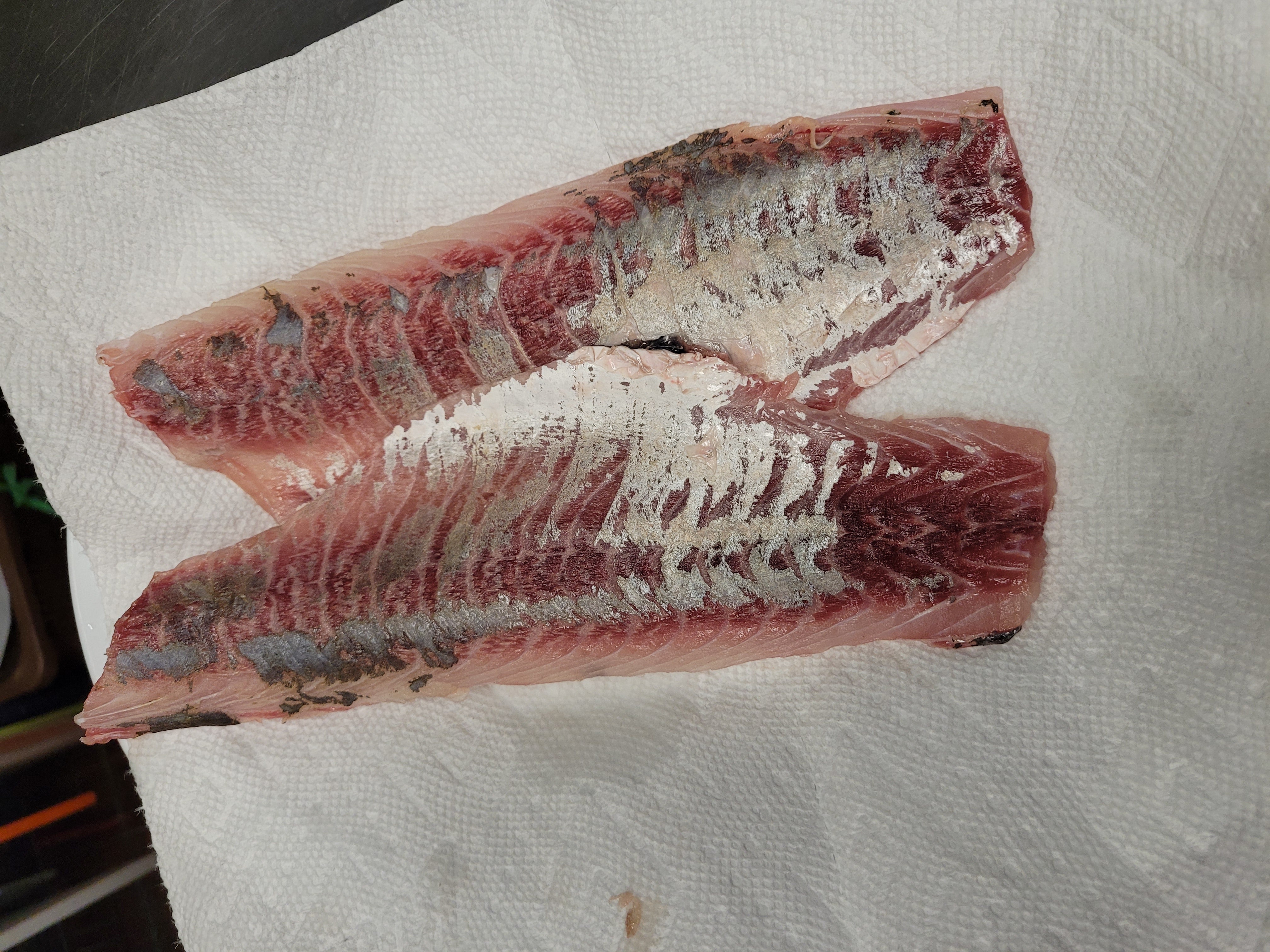
Now you’ve gotten the fillets pretty much done all that’s left is to remove the pin bones from the midline of the fillet. You can cook the fillets whole, as strips, or as I’m doing today nuggets. It’s your call, I just had to feed a lot of people so nuggets were a better choice.
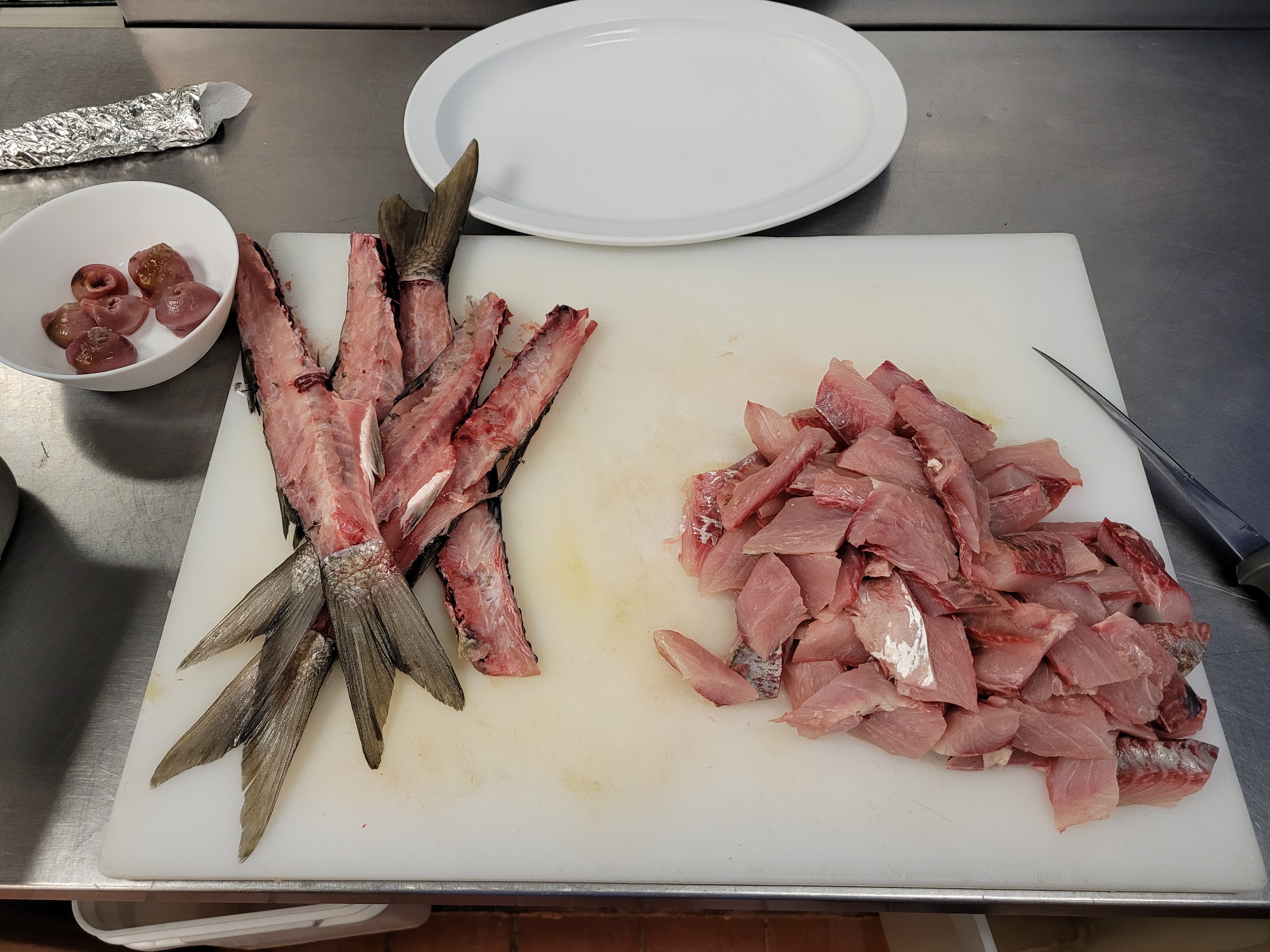
Now with the fillets nuggeted out its time to prep the backbones and gizzards before putting everything in buttermilk. The gizzards have been trimmed and washed out but still a little more prep, the backbones need to have the bloodline scrubbed.
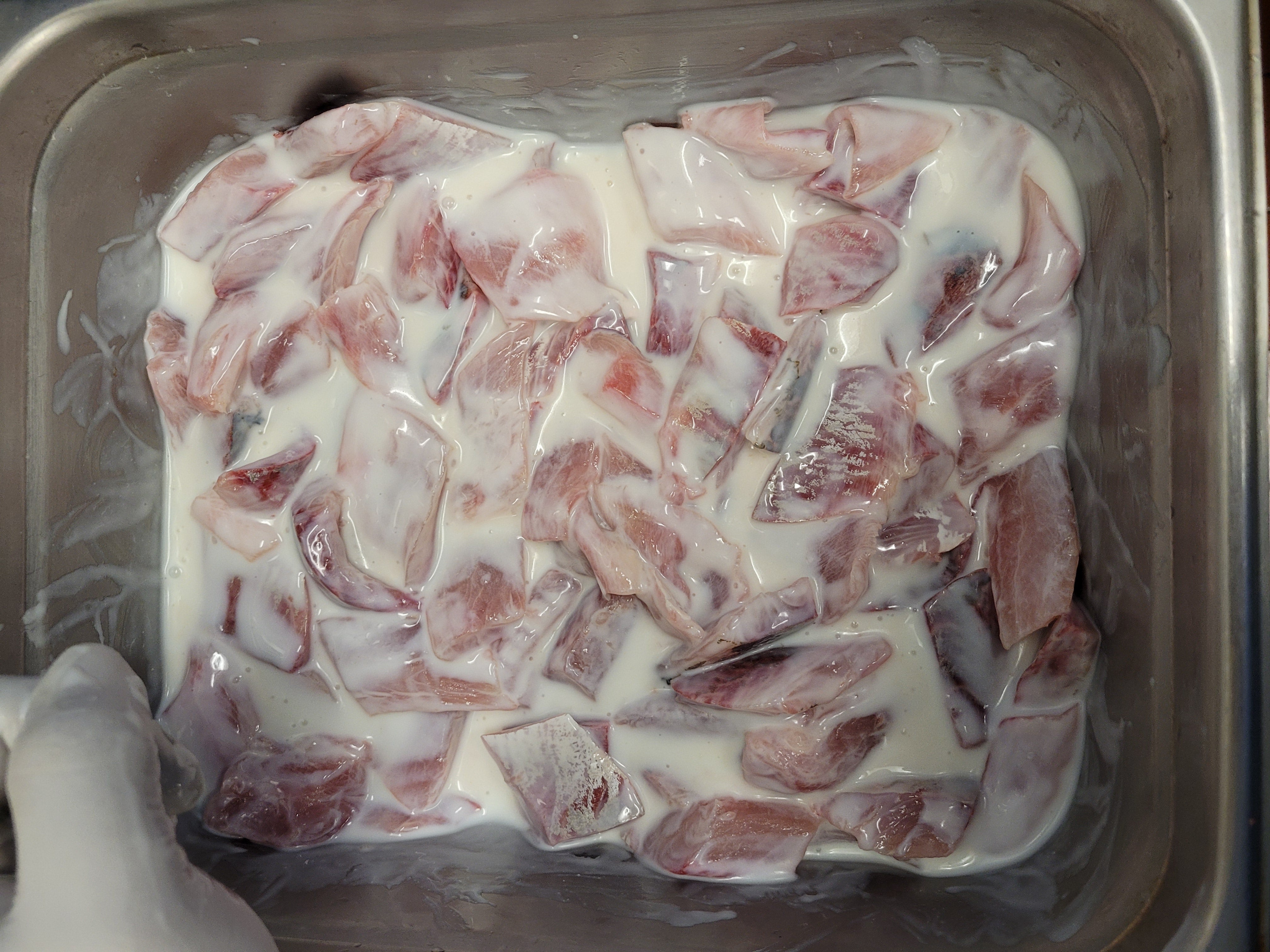
You don’t need to soak the fish in buttermilk, but I like to because of how it draws out blood and lets the breading adhere better. This makes for crispier fish after frying.
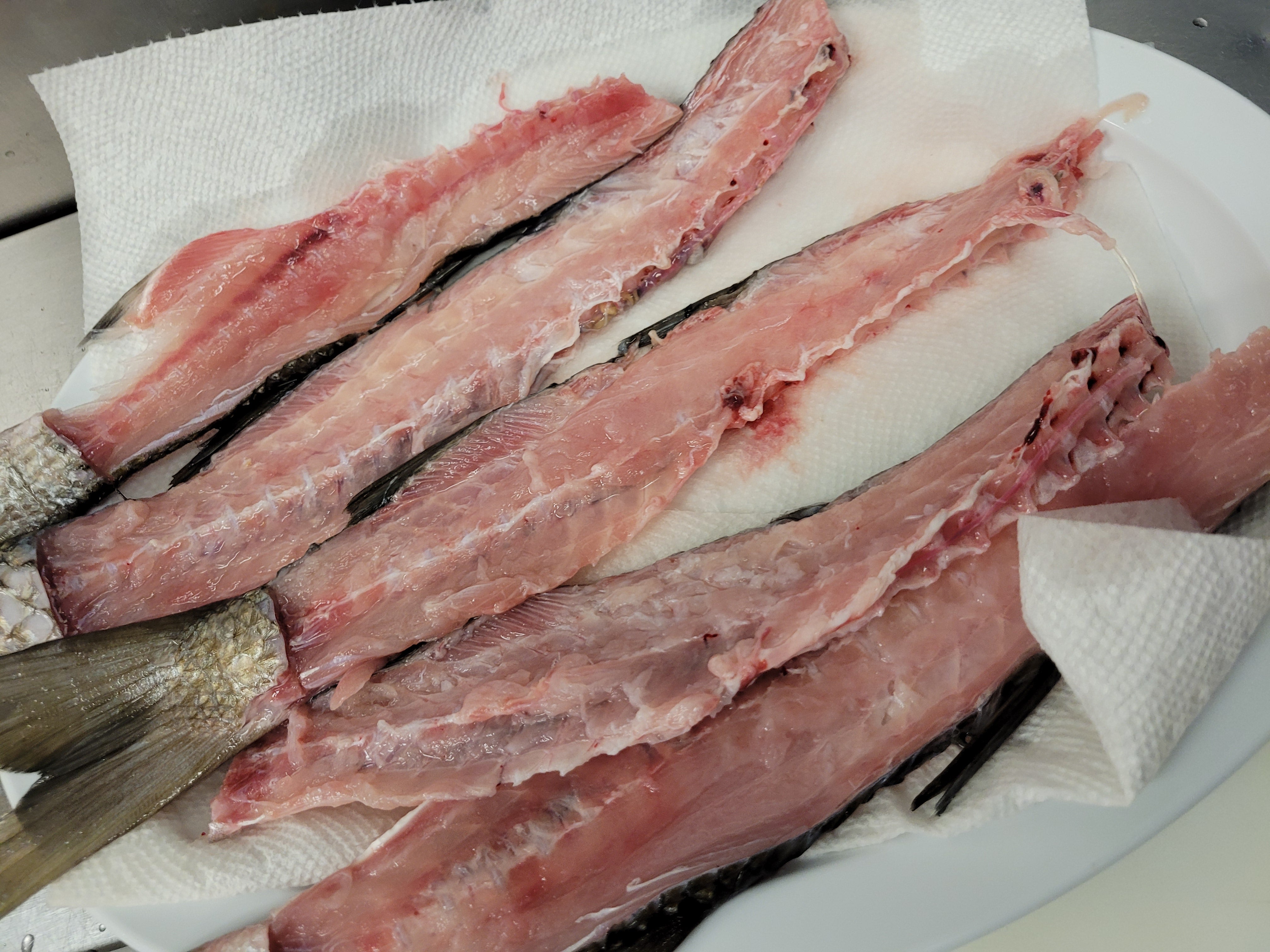
Using a scrub brush I have for cleaning fish, under running water I scrub under the backbone to scrub away the bloodline. This step makes for a cleaner-tasting final product and is highly recommended. Once the backbones are cleaned put them in the buttermilk as well.
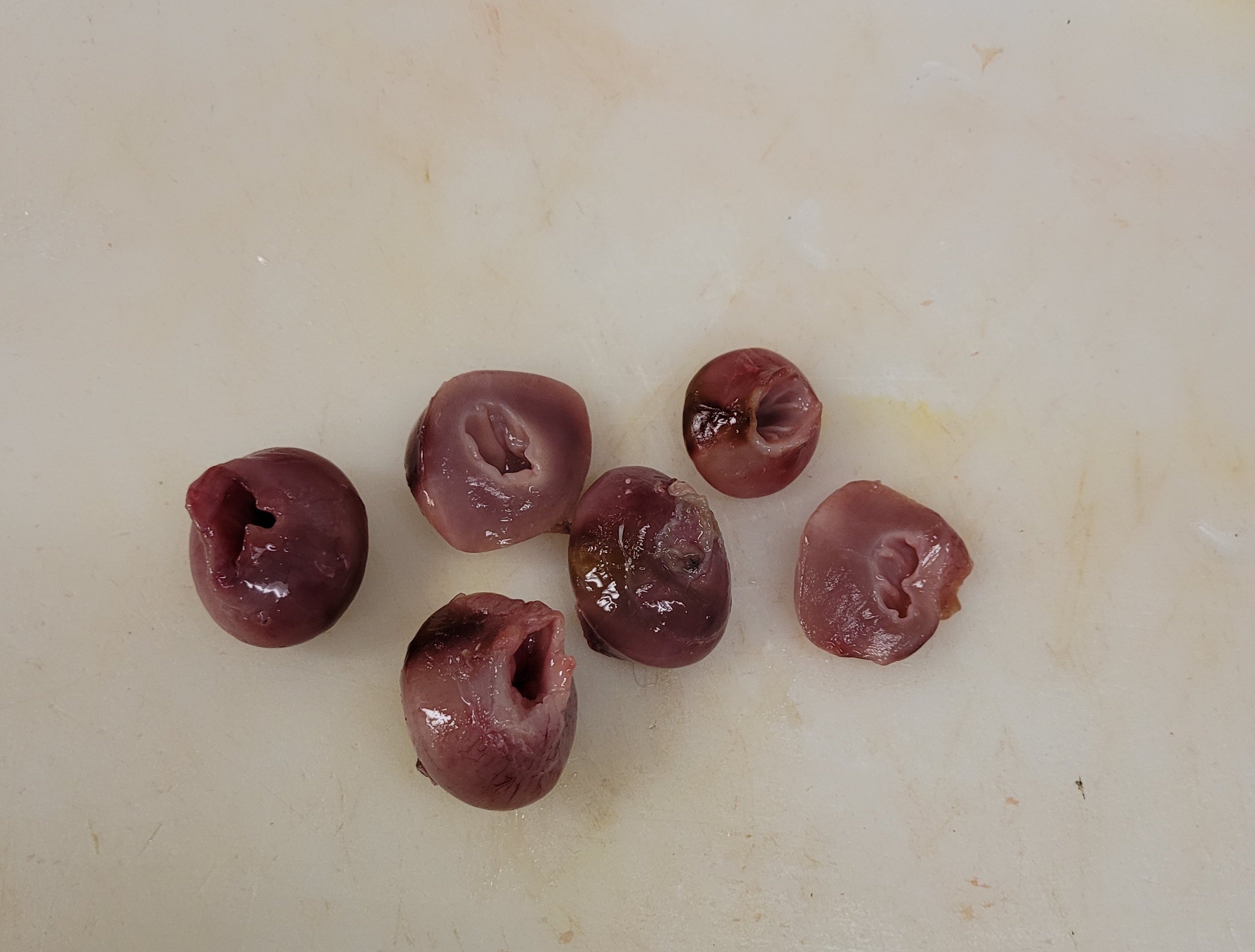
These round organs above are the trimmed gizzards, removing them from the rest of the GI tract and washed under clean water to remove any food matter the mullet had before being caught. From here I cut the gizzards into quarters, that is it for knife work on the gizzards the rest is just some cleaning.
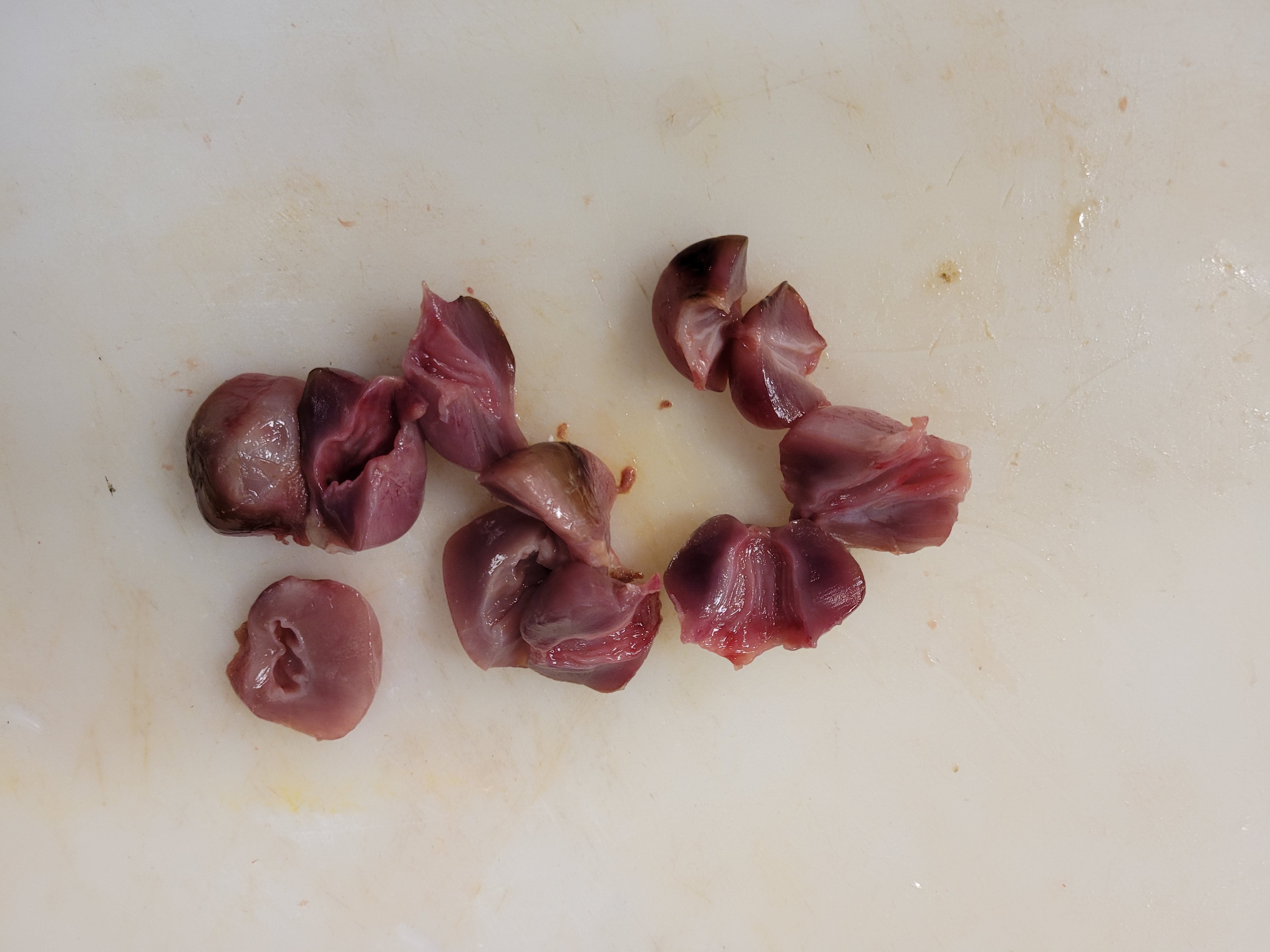
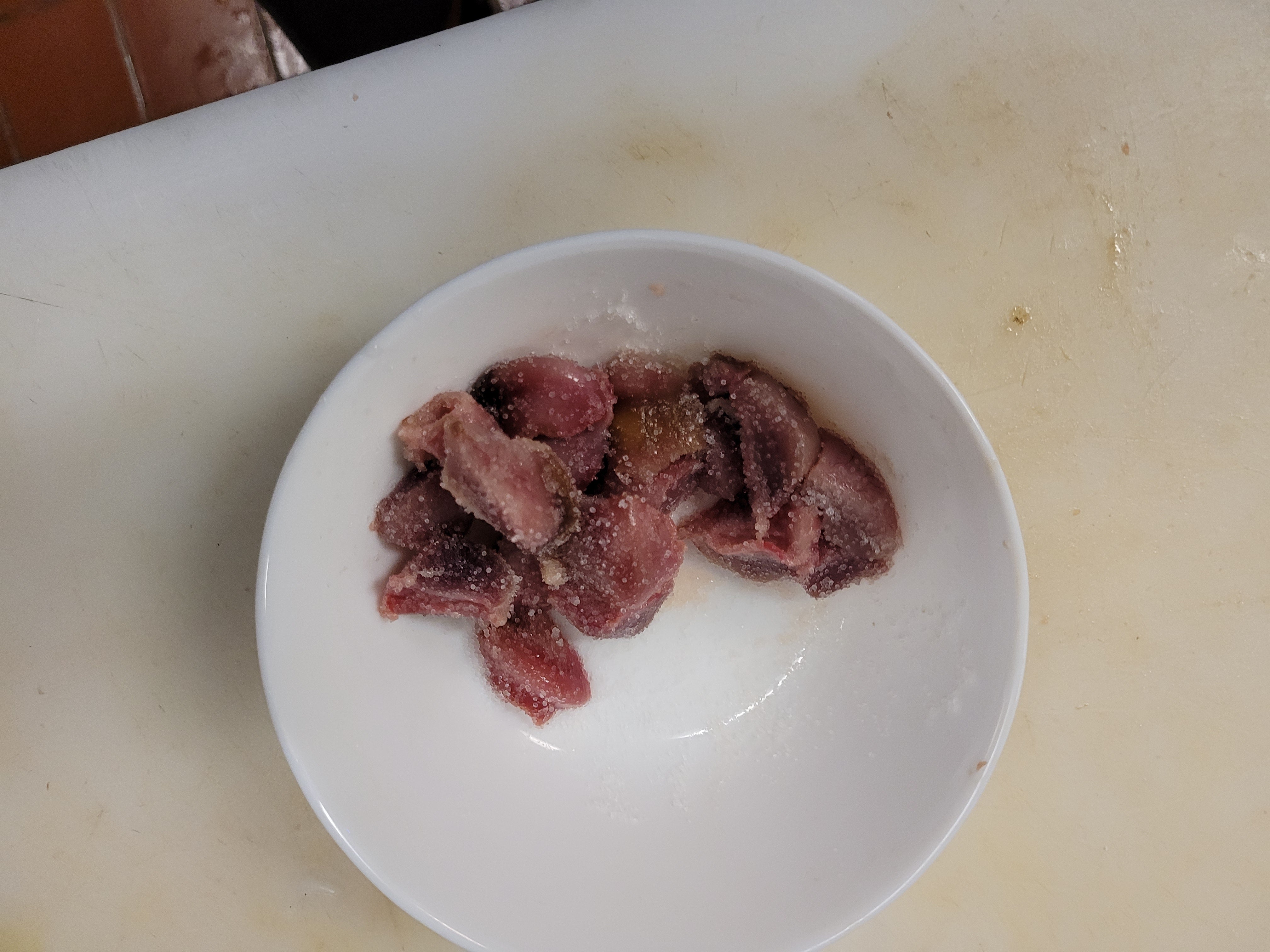
In a small bowl, I put all the gizzards with some course sea salt and massage them. The salt acts a cleaning and abrasive agent to really clean out all the nook and crannies. Once done with the salt, rinse well in fresh water, if not you’ll end up with very salty gizzards. Same as all the other mullet parts put in buttermilk.
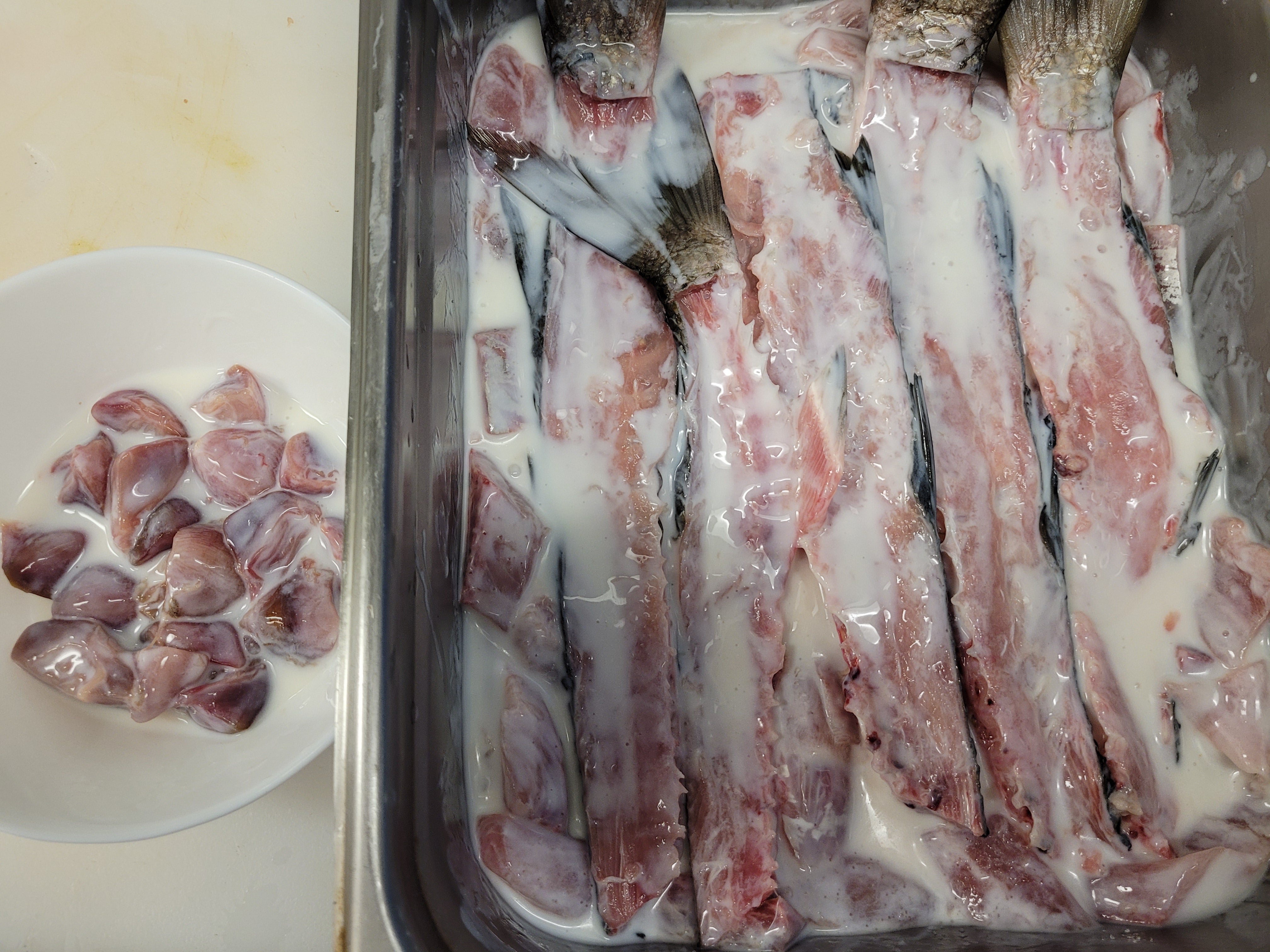
Let all the mullet pieces soak in buttermilk for about 30 minutes to an hour in the fridge. Again you don’t have to do this step but I like it, especially with oilier fish like mullet.
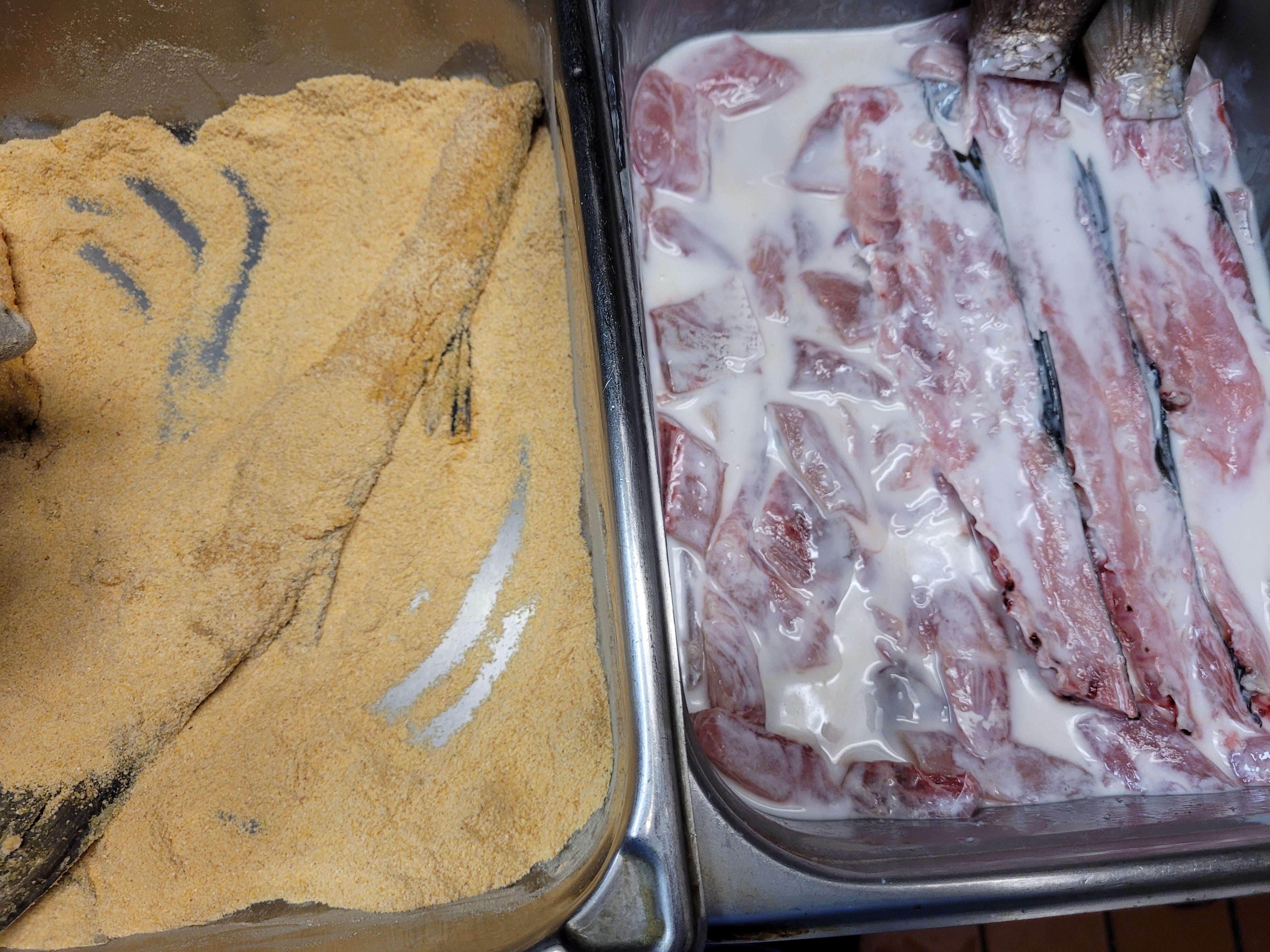
For the dredge anything really works, you can make your own or use store-bought fish fry mixes. this time I just used some Louisiana brand fish fry I had already. Just if you’re making your own dredge make sure to season well, no excuse for bland fried fish.
For frying I have the oil temp set for 375, using clear fry oil in a deep fryer. You’re going to fry everything in batches depending on the size of your fryer. Don’t overcrowd the fryer or you’ll end up with greasy fish. The backbones will take the longest because you want the fins to crisp up. They’ll end up being like a delicious fish cracker, the tail fin is one of the best parts honestly. For the nuggets and gizzards in batch lower gently into the oil and fry till golden and floating. If you have another fryer you can also have some fries going to serve with the fish.
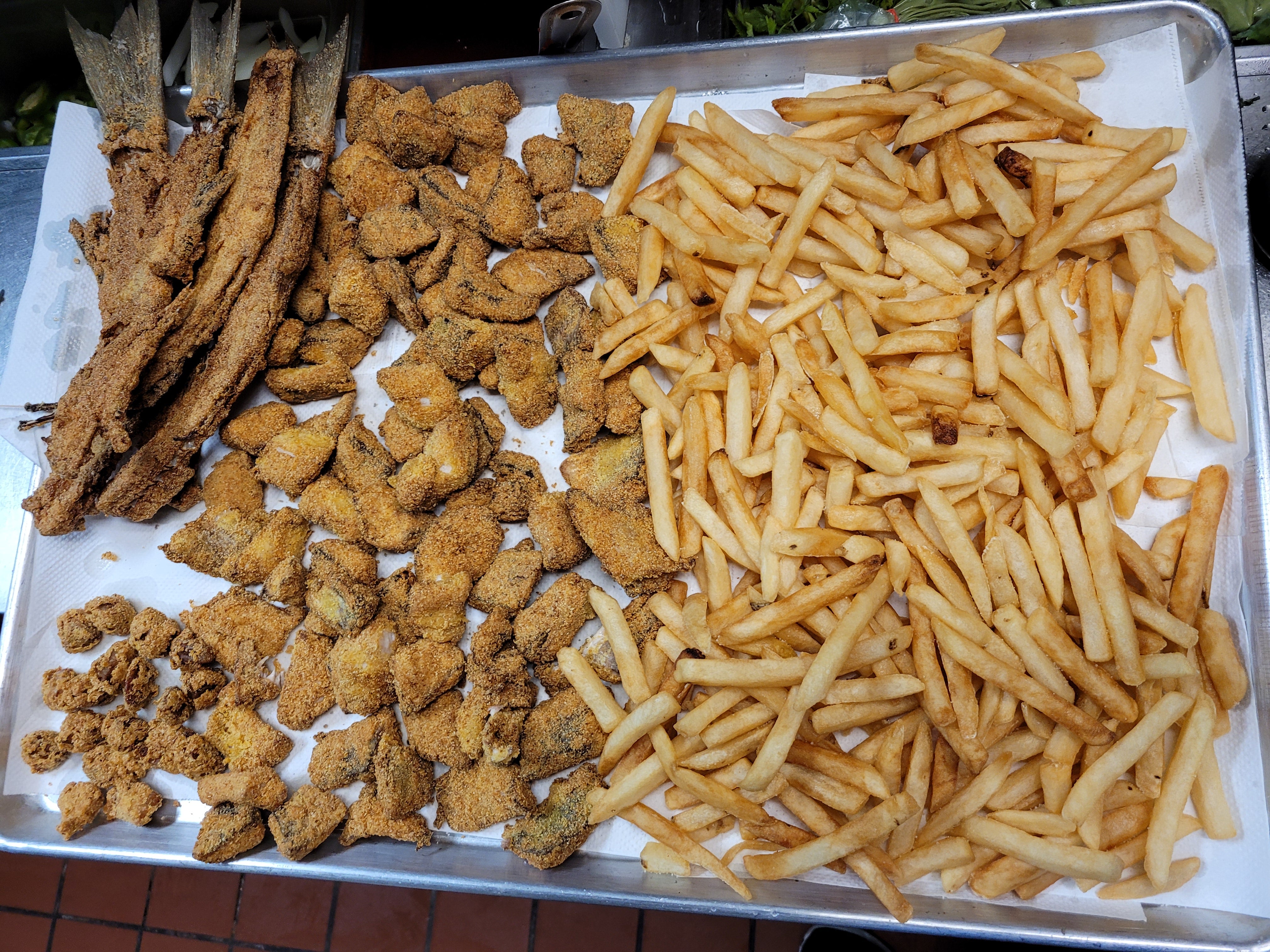
Once the fish is done, pull from the oil and place onto a metal rack or paper towel-lined tray to drain excess oil. Then plate and serve with a side of fries, lemon wedges, and tartar sauce. And that’s how to make a Panhandle classic of fresh Fried Mullet.